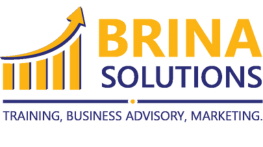
Email marketing remains one of the most powerful digital marketing strategies, delivering strong ROI and offering a personal channel to engage with customers directly. Despite the emergence of new marketing tools, email remains an essential component for businesses of all sizes. In this blog post, we’ll explore why email marketing is still effective, how it impacts your business, and actionable tips to make the most of this valuable tool.
1. Building Strong Customer Relationships
Email marketing fosters relationships with customers by delivering personalized content directly to their inboxes. Unlike social media, where messages can be lost in a sea of posts, email gives businesses a direct line to communicate with their audience. Regular communication through email builds familiarity and trust, leading to long-term customer loyalty.
Benefits of Relationship Building Through Email:
- Personalization: Emails can be tailored to individual customer preferences, making messages more relevant and engaging.
- Customer Retention: Regular updates keep your brand top-of-mind, improving the chances that customers return.
- Value-Added Content: Providing valuable information, like tips or exclusive offers, helps establish your business as a helpful resource.
Example: A travel agency sending travel tips and exclusive vacation deals to their subscribers keeps them engaged and ready to book their next trip.
2. High Return on Investment (ROI)
Email marketing is consistently ranked as one of the highest ROI marketing channels. According to data from HubSpot, email marketing has an average ROI of $42 for every dollar spent. This high return stems from the low cost of email campaigns, combined with the high engagement potential.
Factors Contributing to Email Marketing’s High ROI:
- Low Cost: Email marketing platforms are affordable, with pricing that scales based on list size or frequency.
- Targeted Audience: Since subscribers have opted in, they’re more likely to engage with your content.
- Measurable Results: Email marketing platforms provide in-depth analytics, allowing you to refine and optimize campaigns for better results.
Tip: Segment your email list to target specific customer groups, which increases engagement and the likelihood of conversions.
3. Personalization and Segmentation
Personalization goes beyond just addressing subscribers by name; it involves sending targeted content based on user behavior, preferences, and purchase history. By segmenting your email list, you can create highly relevant campaigns that resonate with specific audience segments, making your emails more effective.
Strategies for Effective Segmentation:
- Demographic Segmentation: Divide subscribers by age, gender, or location to tailor content.
- Behavioral Segmentation: Segment based on customer behavior, like past purchases or browsing history.
- Engagement Level: Separate highly engaged subscribers from those less engaged to tailor re-engagement campaigns.
Example: An online bookstore could send different emails to fiction readers and non-fiction readers, providing recommendations based on their preferences.
4. Increasing Brand Awareness and Credibility
Email marketing helps increase brand awareness by consistently delivering valuable content to customers’ inboxes. A well-crafted email that aligns with your brand identity reinforces your brand’s image and message, helping customers associate your business with the information or products they care about.
Tips for Building Brand Credibility:
- Maintain Consistent Branding: Use the same tone, colors, and logo in all email communications.
- Provide Value: Offer tips, updates, and information that benefit the subscriber.
- Professional Design: Visually appealing emails with professional layouts and high-quality images boost credibility.
Example: A fashion brand that regularly shares styling tips, new arrivals, and exclusive discounts positions itself as a trusted source for fashion inspiration.
5. Driving Website Traffic and Sales
Email marketing is a powerful tool for driving traffic to your website, product pages, and blog posts. By including links and clear calls-to-action (CTAs) in your emails, you encourage subscribers to visit your site, increasing the chances of conversions.
Ways to Drive Traffic and Sales with Email:
- Product Recommendations: Suggest products based on past purchases or browsing history.
- Special Offers and Discounts: Limited-time offers drive urgency, encouraging subscribers to click and shop.
- Blog Post Highlights: Link to blog posts or resources on your site to keep subscribers informed and engaged.
Tip: Use UTM parameters in your links to track which emails drive the most traffic, allowing you to fine-tune your content and CTAs for higher engagement.
6. Supporting Content Marketing Strategies
Email marketing can amplify your content marketing efforts by ensuring that your blog posts, guides, and other content reach an interested audience. By sharing content directly with your subscribers, you can increase engagement and drive more traffic to your website.
Effective Content Sharing Tactics:
- Weekly or Monthly Newsletters: Curate your best content in a digestible format.
- Exclusive Content Previews: Offer subscribers early access to new content, creating a sense of exclusivity.
- Educational Series: Provide a series of emails on a specific topic to engage readers over time.
Example: A financial services firm could share blog posts on budgeting tips or investment strategies, positioning itself as a valuable resource for financial advice.
7. Enhancing Customer Retention and Loyalty
Keeping customers engaged and coming back is essential for sustained growth, and email marketing is a key tool for nurturing these relationships. Regularly engaging with customers through newsletters, special offers, and personalized messages helps build loyalty and encourages repeat purchases.
Retention-Boosting Email Tactics:
- Loyalty Programs: Send exclusive offers or rewards to loyal customers, showing appreciation for their business.
- Re-Engagement Campaigns: Target inactive subscribers with incentives to bring them back.
- Product Updates: Keep customers informed about new arrivals or features that may interest them.
Example: A coffee subscription service could send personalized emails with special discounts or early access to new flavors to retain subscribers and boost loyalty.
8. Measuring Success and Optimizing Campaigns
One of email marketing’s biggest advantages is its measurability. With data on open rates, click-through rates, and conversion rates, businesses can assess how each campaign performs and adjust accordingly. This continuous improvement process ensures that your campaigns evolve to meet your audience’s needs.
Key Metrics to Track:
- Open Rate: Indicates how compelling your subject lines are.
- Click-Through Rate (CTR): Shows how engaging your content is.
- Conversion Rate: Reflects the success of your CTAs and overall email effectiveness.
Tip: Conduct A/B testing on subject lines, CTAs, and email design to see what resonates most with your audience.
9. Maintaining Compliance with Data Privacy Regulations
Email marketing requires compliance with regulations like GDPR, CCPA, and CAN-SPAM to ensure data privacy and protect consumer rights. Staying compliant not only protects your business legally but also builds trust with subscribers.
Tips for Compliance:
- Obtain Consent: Ensure that all subscribers have opted into your emails.
- Provide Unsubscribe Options: Make it easy for subscribers to opt out of communications.
- Handle Data Securely: Follow best practices for data security and privacy.
Example: A subscription box company could include an “unsubscribe” link in every email and provide a clear privacy policy explaining data usage.
Conclusion: Why Email Marketing Still Works
In an era of fast-paced digital marketing, email remains an invaluable tool for engaging customers, driving conversions, and fostering brand loyalty. From high ROI to unmatched personalization, the benefits of email marketing are clear. Businesses that prioritize a well-planned email marketing strategy can build long-lasting customer relationships, increase sales, and strengthen their market presence.
Ready to leverage the power of email marketing? Brina Solutions can help you create targeted, high-impact email campaigns that engage and convert. Contact us today to get started!







Leave a Reply